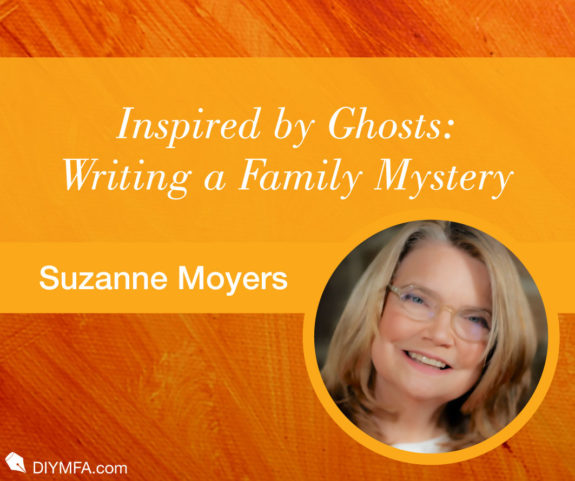“Papa, come back! Please!”
I was sixteen, on my way to raid the refrigerator yet again, when I heard my grandmother crying out from our living room. Hunger temporarily extinguished, I peeked around the corner to find Nana, as we called her, sitting on the edge of the sofa.
“Why did you leave us, Papa?” she beseeched an empty corner. “Why?”
A chill traced my spine. That corner might’ve been empty, but the expression of bewilderment on Nana’s face, the wounded trill of her voice, were utterly real, serving eventually as inspiration for my debut novel, ‘Til All These Things Be Done.
Though Nana was a loving woman who doted on her eight grandchildren, I’d always sensed something distant about her, a quiet distraction that set her apart. Over the years, she’d talk about her eventful youth—her mother’s early death, happy memories with high school friends, the foster family who’d changed her life. But on the rare occasions she mentioned her father, a sadness would fill her eyes, and she’d quickly change the subject, adding to her mystique.
By the time Nana moved from her Texas farm to our home on Long Island, the gulf between us had only widened. To a rebellious adolescent living in a fast-paced suburb of New York City, my prim, southern grandmother seemed hopelessly old-fashioned. It didn’t help when she began showing early signs of dementia, and her constant repetition of the same stories, the way she panicked when she ‘lost’ her precious purse (which seemed to happen every five minutes), further tested my tenuous patience.
But witnessing those Ghost Papa episodes opened a pathway straight from my grandmother’s heart to my own, helping me view her not as an out-of-touch elder but as a complicated human being with a vivid, unresolved past. And when I started asking my mother questions about this chapter of our family history, I soon understood its power to haunt.
By all accounts, my great-grandfather, aka Papa, adored his family. But in 1919, after leaving home to find work in faraway Houston, he vanished without a trace. After Nana’s mother, Sudie, died during an outbreak of “the great influenza”, Nana’s callous grandfather, Columbus—who, as it happened, had a sinister hidden role in Papa’s departure—sent them to an orphanage across the state.
All along, Nana hoped the rumors about Papa weren’t true, that he was alive and would eventually reclaim them… except he never did, with lifelong repercussions for his kids. Decades later, my grandmother discovered the devastating truth about her father, a betrayal so painful, she vowed to bury his memory forever… until it roared back with a vengeance in her final days.
“Write what you know,” people advise, but for me, it was more like “Write what haunts you.” Ten years later, as I made my first attempt at writing fiction, this was the story that poured forth—or at least three chapters of it, which I soon filed away. It wasn’t until my late 40s that I made a more serious effort at writing. Casting about for ideas, I came across those earlier chapters, surprised by how they still resonated. That emotional connection, and my instinct to make sense of the story, became the purpose I needed in tackling the novel, a journey that took more than ten years of hard work and dedication.
Luckily, I found plenty of inspiration along the way, including my research into the ‘cotton culture’ of early 20th-century Texas. I was surprised to discover the diversity of that setting, a rich amalgam of native American, African, Appalachian, and European traditions. Yet, it was also a society in which white supremacy defined every aspect of life, informing a brutal etiquette meant to keep Blacks and others marginalized.
As my protagonist, Leola, comes of age in that time and place, I imagine the deep conflict she feels over this most flagrant hypocrisy of her Protestant, Do Unto Others upbringing. But this was also a period of intensified Black activism and, while someone like Leola would never have played the white savior, when she witnesses a Black friend advocating for equality, it does inspire her own voice of protest, however halting and small.
Beyond the facts I unearthed during my formal research, I also had family heirlooms to fuel my creative fire. Among these was a slim, self-published memoir written by a woman who’d known my grandmother when they both lived at the orphanage. Despite the relentlessly upbeat tone of that account, there are hints of a harsher reality beneath the surface, including a brief mention of a scandal involving another child. This intimation laid the foundation for a crucial point of decision in the novel that tests Leola as never before.
Photographs also served as treasured resources for this endeavor. A particularly poignant scene depicts Nana with her younger siblings at the train station the day their grandfather sent them to the orphanage. Though Columbus’s bushy white beard and low-brimmed hat make his expression difficult to read, the children are grim-faced and clearly worried. My grandmother, barely a child herself, rests her hands on the shoulders of her youngest sister, Charlena, as if trying to protect her from what lay ahead. That gesture symbolizes the lifelong responsibility Nana felt for all her siblings, but especially for Charlena, who’d lost far too much in the span of her young life. This responsibility was a heavy burden for my adolescent grandmother to bear, forcing her to make decisions she was ill-equipped to make—a situation Leola must reckon with, too.
Maybe my most important visual muse, however, is the portrait hanging above my desk, which captures my grandmother soon after she graduated high school. In spite of so many recent losses, Nana had finally achieved her dream of being accepted to college, and there’s the suggestion of pride in her focused gaze. In that moment, she had plenty of things to look forward to, but I can’t help thinking she might still have harbored hopes of her father’s return—or at least understanding why he hadn’t.
In crafting a possible answer to that question, I looked to a real-life discovery we’d made around the time my grandmother began ‘seeing’ the ghost of her father. While we’d never quite understood what that eerie detail implied, I’d long ago used it as the basis for my own imaginary postlude, one that involved an enigmatic stranger bearing irrefutable evidence of Papa’s love. Now, as I threaded together the plot points of the novel, that fantasy drove its more hopeful resolution, a closure my grandmother never had but that I like to believe could be true.

Suzanne Moyers, a former teacher, has spent much of her career as an editor and writer for educational publishers. An avid volunteer archeologist, mudlarker, and metal detectorist, she’s also the proud mom of two amazing young adults. ’Til All These Things Be Done is based on a still-unraveling family mystery, and the real-life twist of fate that inspired the novel’s fictional resolution. Suzanne resides in northern New Jersey with her husband, Edward, and their spoiled fur baby, Tuxi. Learn more at https://suzannemoyers.com.







